
Art Quilter, Robbi Joy Eklow, shares her method for facing a quilt, a finish that gives the edges of a quilt a clean look without the frame of traditional quilt binding.

Art Quilter, Robbi Joy Eklow, shares her method for facing a quilt, a finish that gives the edges of a quilt a clean look without the frame of traditional quilt binding.
International Quilting Weekend at TQS is a place to learn quilting. Now use this to make your creations come to life. The Grand Prize is a BERNINA 570 QE.
It's the right size with amazing features. It's time to finish your masterpiece.
International Quilting Weekend is March 17-19 at TheQuiltshow.com.
Ricky is offering a gift for the contest that every quilter will love.
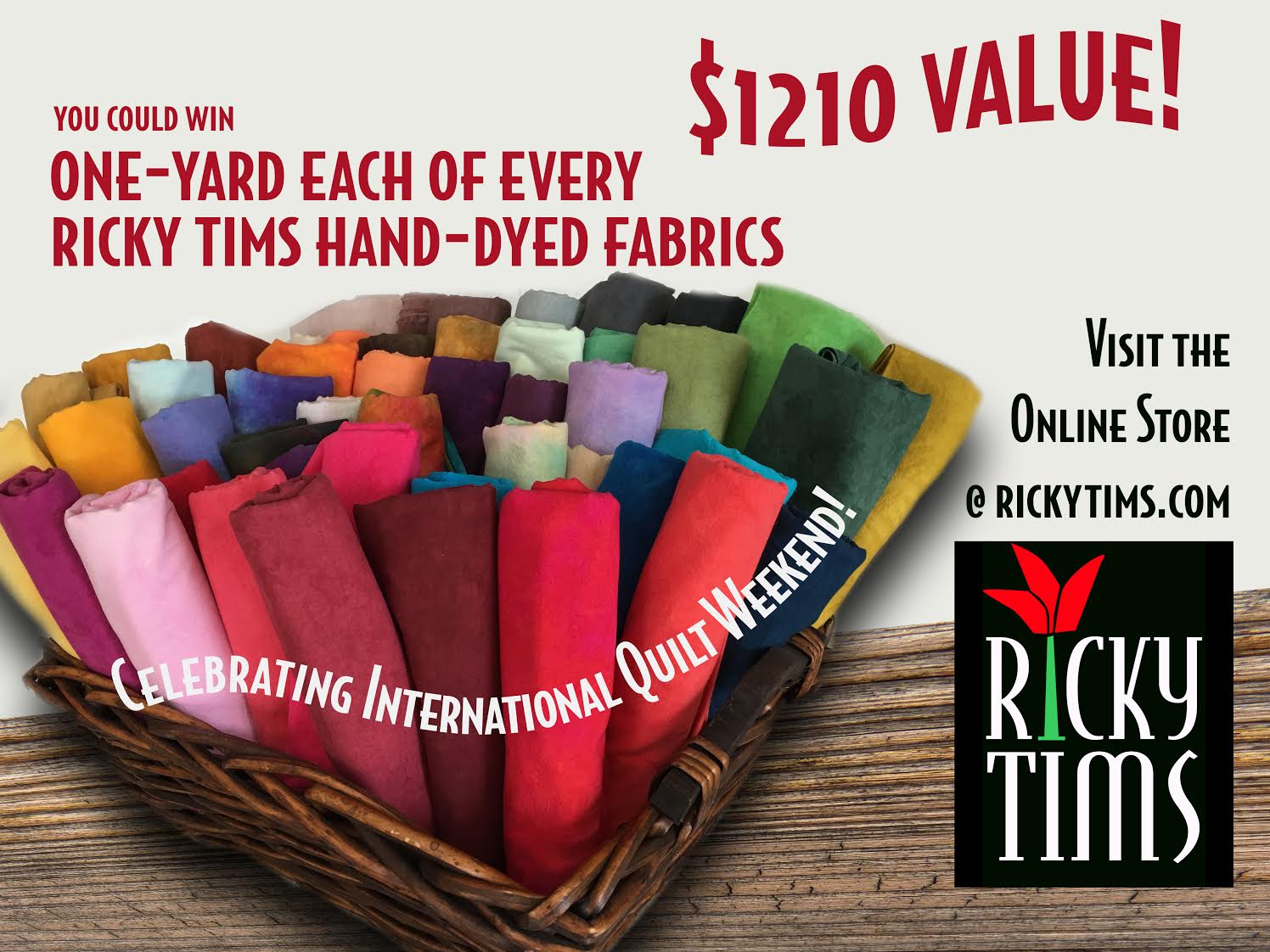
A crazy quilt with a bold graphic style, "Whoopee," by Lynda Faires isn't your typical crazy quilt.
Star Members can watch Lynda in Show 2003: Vintage Charm Using Silk and Machine Threadwork.
WhoopeebyLyndaFaires - 36 Pieces Non-Rotating
WhoopeebyLyndaFaires - 100 Pieces Non-Rotating
WhoopeebyLyndaFaires - 289 Pieces Non-Rotating
WhoopeebyLyndaFaires - 36 Pieces Rotating
WhoopeebyLyndaFaires - 100 Pieces Rotating
WhoopeebyLyndaFaires - 300 Pieces Rotating
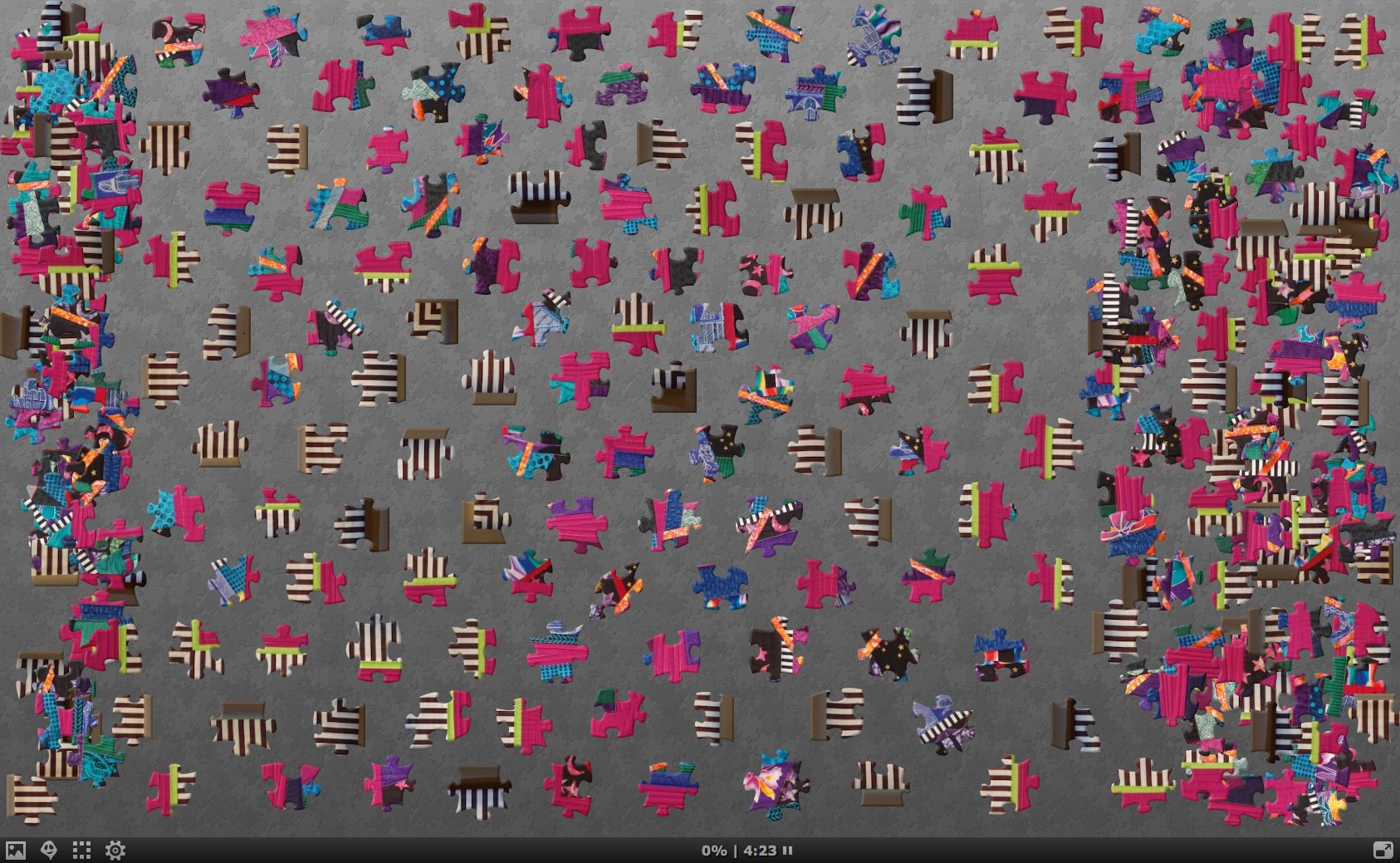
Original Photo: Mary Kay Davis
A crazy quilt with a bold graphic style, "Whoopee," by Lynda Faires isn't your typical crazy quilt.
Star Members can watch Lynda in Show 2003: Vintage Charm Using Silk and Machine Threadwork.
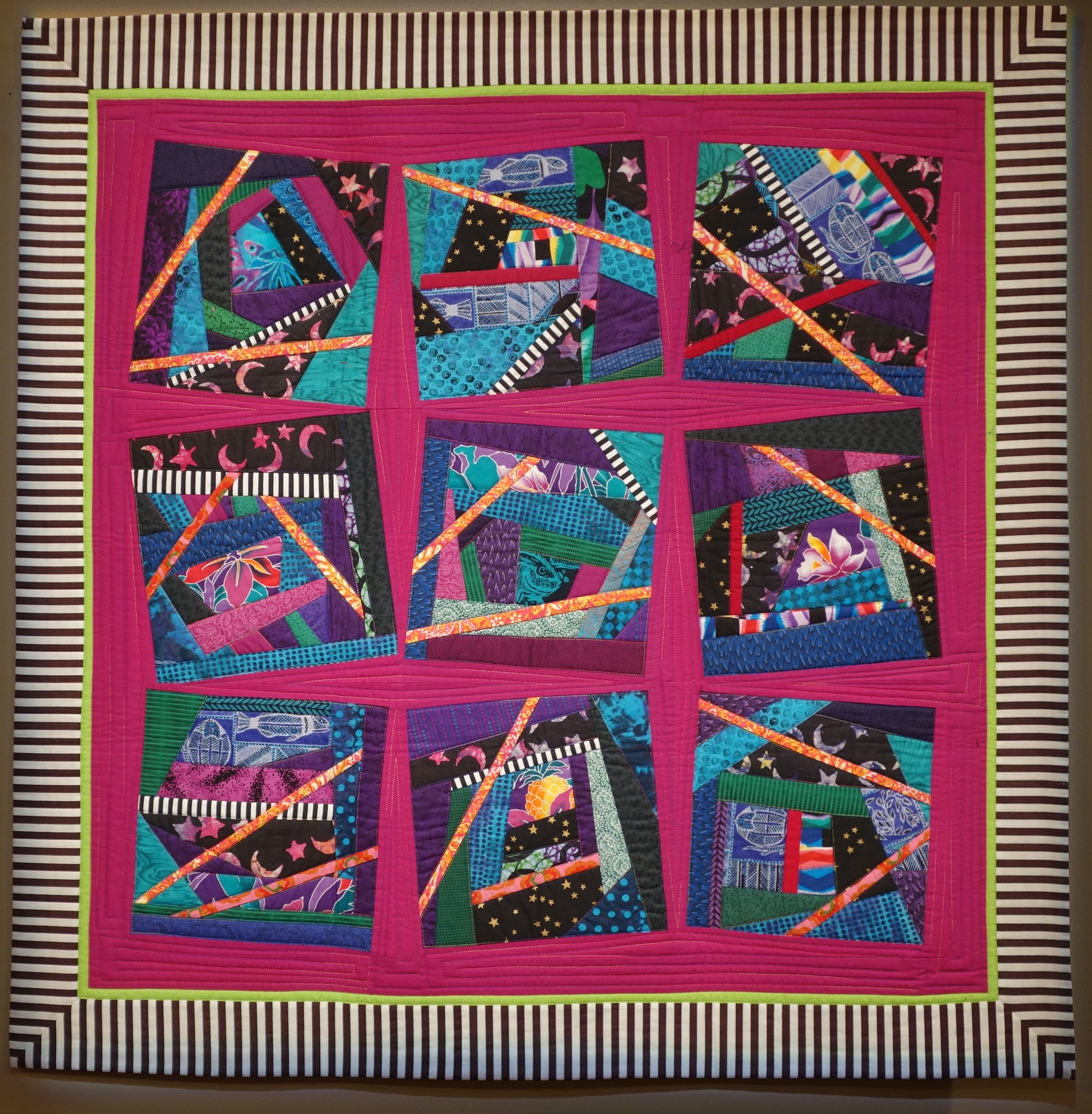
Original Photo: Mary Kay Davis
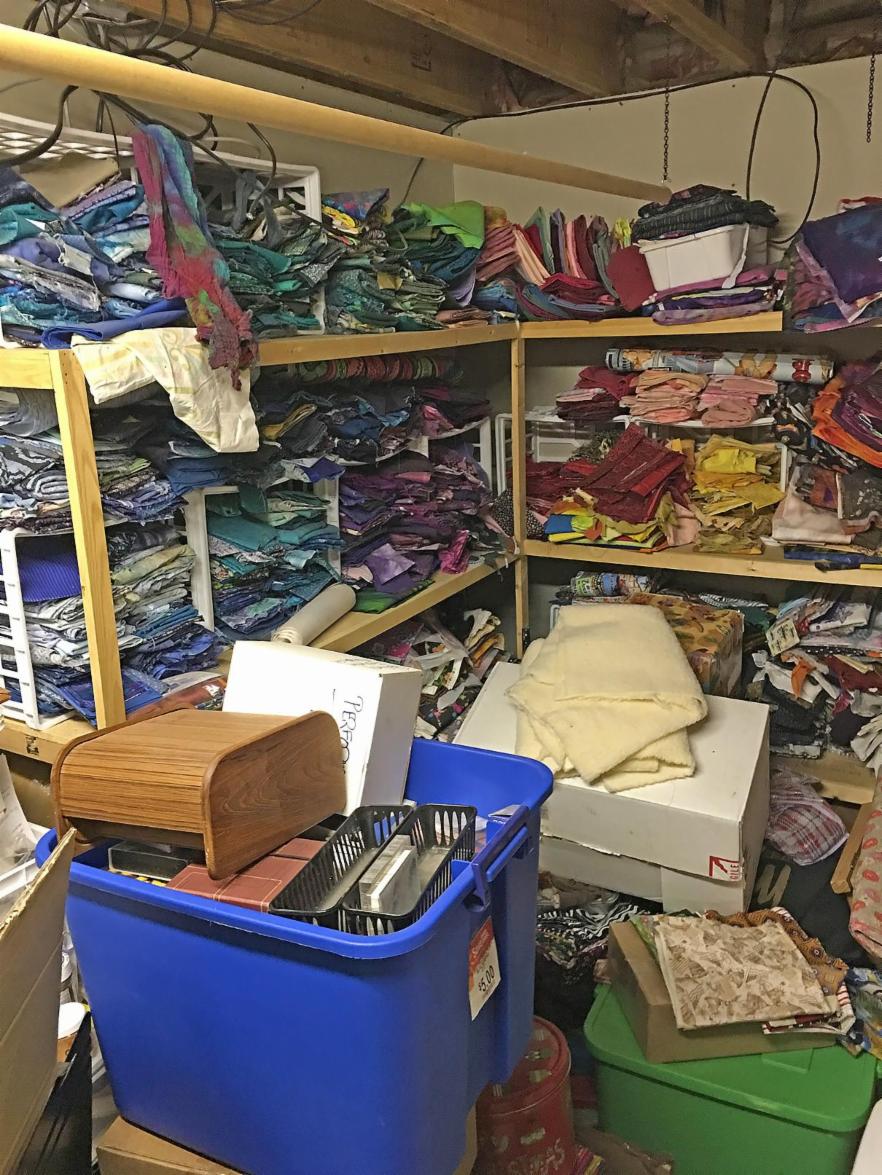
Do you subscribe to more than one quilt magazine? Do you have fabric stored under every bed in the house? Do you think you are a fabri-holic? Take this test at Phoebe Moon Quilt Designs and find out.
We all know that quilting goes better with chocolate. This How It's Made video describes best how chocolate is made inside a Hershey candy factory in Pennsylvania in 1976. The factory tour shows chocolate bars and the famous chocolate Hershey’s Kiss being made on machines and mixers then shaped by production equipment into various chocolate shapes and designs. All happy kids know that the recipe for the best chocolate is typically made sweet, with ingredients of cocoa beans, roasted and ground, and then mixed with butter and sugar sometimes flavored with vanilla or nuts. Hershey's "Milk Chocolate" recipe was made to be less expensive than other traditional candies & chocolates which tended to be too expensive for the common American at the time.
Grab a cup of hot cocoa and watch the magic happen.
3 Substitute Fabrics. That's what we needed to make 35 more kits then the fabrics were gone. Alex asked Moda to make their choices for the substitutions. They are below. Did they do a good job? The substitute fabrics are on the bottom.
We have already sold 5 of the new kits and there are only 30 left. Please don't wait if this BOM and kit are pulling at your heart.

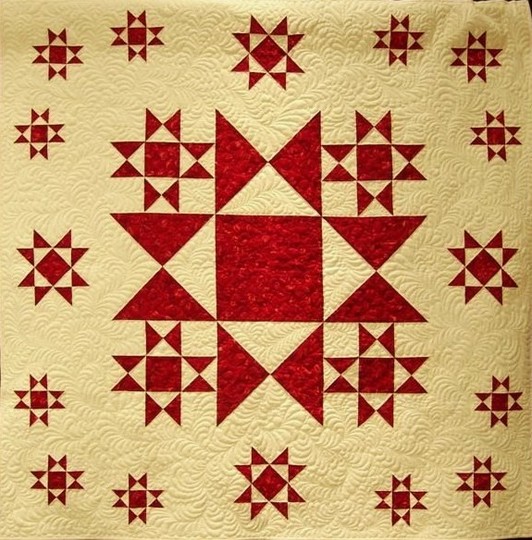
Feathered Star by TQS member Denise-nh
For the Love of Turkey Red
By Lilo Bowman
Can you imagine spending 25 days working at the most tedious and foul-smelling process just to obtain the color red for a piece of fabric? What is it about this particular color that captured the imagination, admiration, and envy of the world during the late 1800s?
In the 1880s, the range of colors available for fabrics was rather limited, and--due to the stress of washing (boiling and bleaching)--colors tended to fade fairly quickly. Typically colors were limited to available natural dyes or to the natural color of wool produced by animals. It must have been a thrill to add the luxury of a brilliant red fabric to one's quilt or wardrobe.
Turkey-red cloth was a highly prized cloth that was intensely rich in color that would not fade or bleed. The dyeing process, which employed the madder root and a host of other ingredients, originated in India, but soon spread to Levant, Smyrna, and Adrianople. The name Turkey red is often misinterpreted as a color, when it really is a dye process used in the region of the Middle East referred to at that time as Turkey. While the color of the fabric was a thing of beauty for the eye of the beholder, the process to produce this luscious material was far from it, and was held in secret for many years. Many spies were sent to this region of the world in search of the recipe.
It wasn't until 1765 that two Greek dyers from Smyrna were enticed to Rouen, France to demonstrate the technique for dyeing cotton and linen fabrics that would not fade or bleed after numerous washings and/or bleaching. This information subsequently was carried to Scotland, where--in less than 20 years--an entire industry revolving around the production of Turkey-red fabric developed in Leven, an area known for its production of quality textiles. Workers from all over Scotland and Ireland came to work in this booming industry.
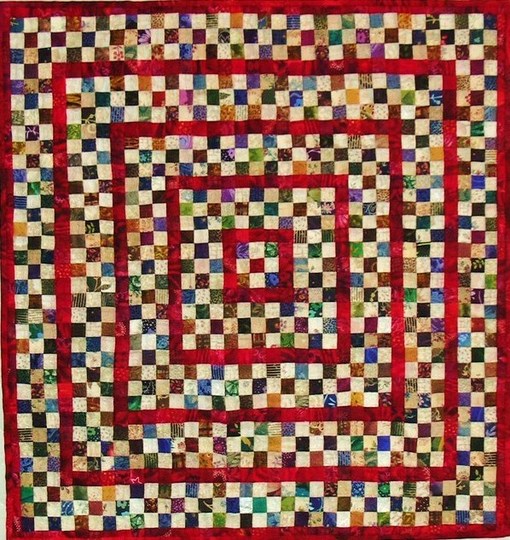
Red Squares by TQS member Charlotte
Alas, the process, or "craft" as it was called, was a very unpleasant job. The locals who worked the craft were known as "jellie eaters" (that is, jelly or jam) due to the red hands and arms they acquired from the dyeing process. As with most things during the 18th century, the manufacture of Turkey-red fabric was very labor extensive. It was also quite smelly! We found a recipe for the process from John Wilson's "An Essay on Light and Colours" (Manchester, 1786). As you can see, the process involved a multitude of steps, and could take as long as three weeks to complete.
1. Boil cotton in lye of Barilla or wood ash.
2. Wash and dry.
3. Steep in a liquour of Barilla ash or soda plus sheep's dung and rancid olive oil.
4. Rinse, let stand 12 hours, dry.
5. Repeat steps 3 & 4 three times.
6. Steep in a fresh liquor of Barilla ash or soda plus sheep's dung, olive oil and white argol.
7. Rinse and dry.
8. Repeat steps 6 & 7 three times.
9. Treat with a gall nut solution.
10. Wash and dry.
11. Repeat steps 9 & 10 once.
12. Treat with a solution of alum, or alum mixed with ashes and lead acetate.
13. Dry, wash, dry.
14. Madder once or twice with Turkey madder to which a little sheep's blood is
added.
15. Wash.
16. Boil in a lye made of soda ash or the dung liquor.
17. Wash and dry.
Keep in mind that this entire process was done without the aid of rubber gloves, facial masks, or good ventilation. (Can you image doing this yourself today? Not likely!) Many manufacturers soon discovered, however, that society loved the brightly colored and reliable fabric, and was willing to pay even 10 times more than for other fabrics. It was just that popular throughout the world.
Of course, then as now, printed designs were directed at particular tastes and markets. Muslims tended to prefer geometric and floral patterns, while Hindus desired elements such as elephants, peacocks, and tigers. Familiar circles, diamonds, and paisley can be found in a simple piece of fabric worn by beloved (and diverse) icons such as the cowboy and Benjamin Bunny, as well as by elegant ladies in European society. (We are talking here about the bandanna, which in Hindi means "to tie.")
So, the next time you go shopping for some luscious red fabric, remind yourself how lucky you are to be living in the 21st century. Your only problem now is coming up with the money to pay!
The crazy quilt blocks in Lynda Faires' "Still Crazy" quilt stand out against the dark background. With their 'a-kilter' orientation, they look like they are dancing.
Star Members can learn more about crazy quilts with Lynda Faires in Show 2003: Vintage Charm Using Silk and Machine Threadwork.
StillCrazybyLyndaFaires - 35 Pieces Non-Rotating
StillCrazybyLyndaFaires - 99 Pieces Non-Rotating
StillCrazybyLyndaFaires - 300 Pieces Non-Rotating
StillCrazybyLyndaFaires - 35 Pieces Rotating
StillCrazybyLyndaFaires - 99 Pieces Rotating
StillCrazybyLyndaFaires - 300 Pieces Rotating
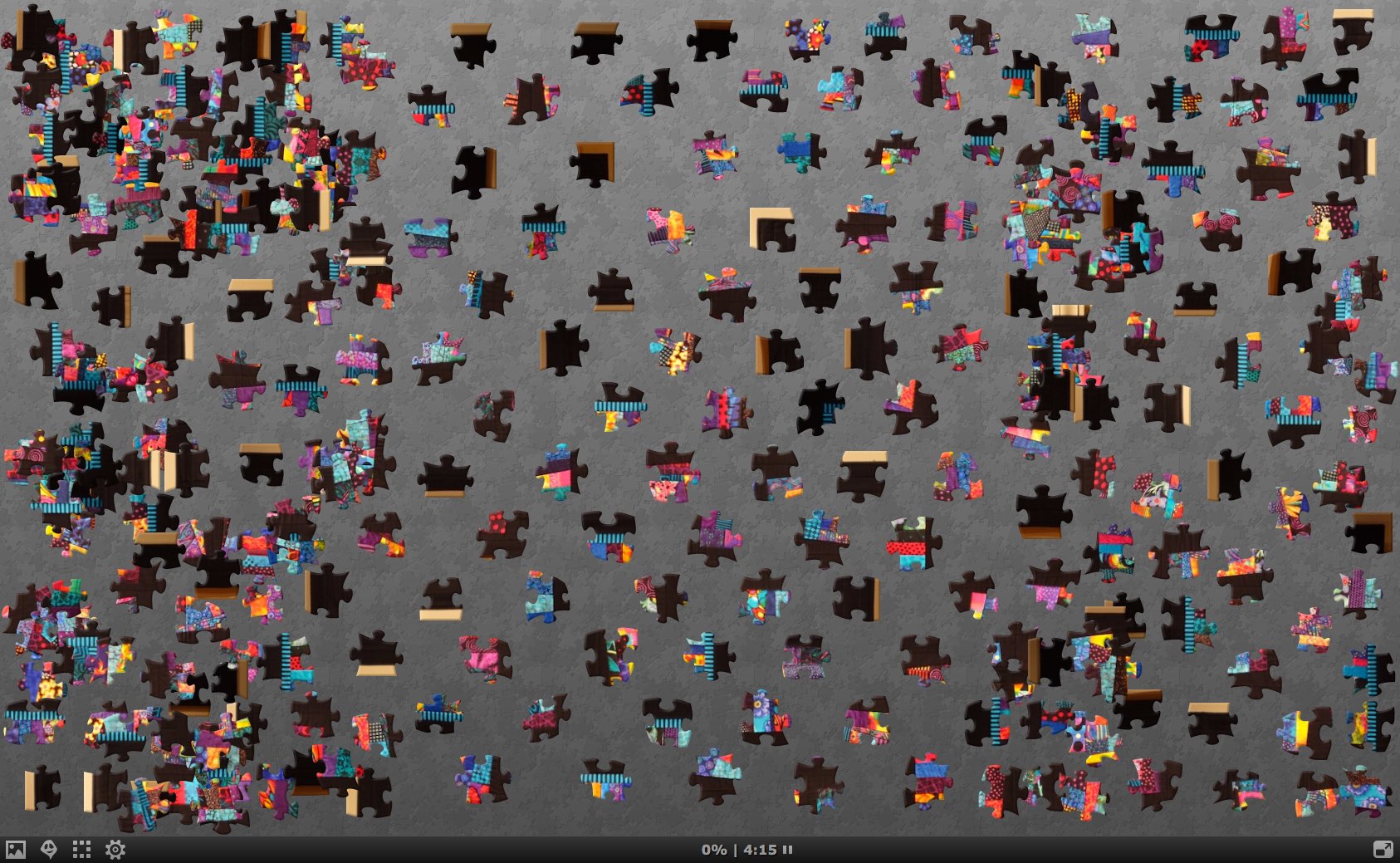
Original Photo: Mary Kay Davis